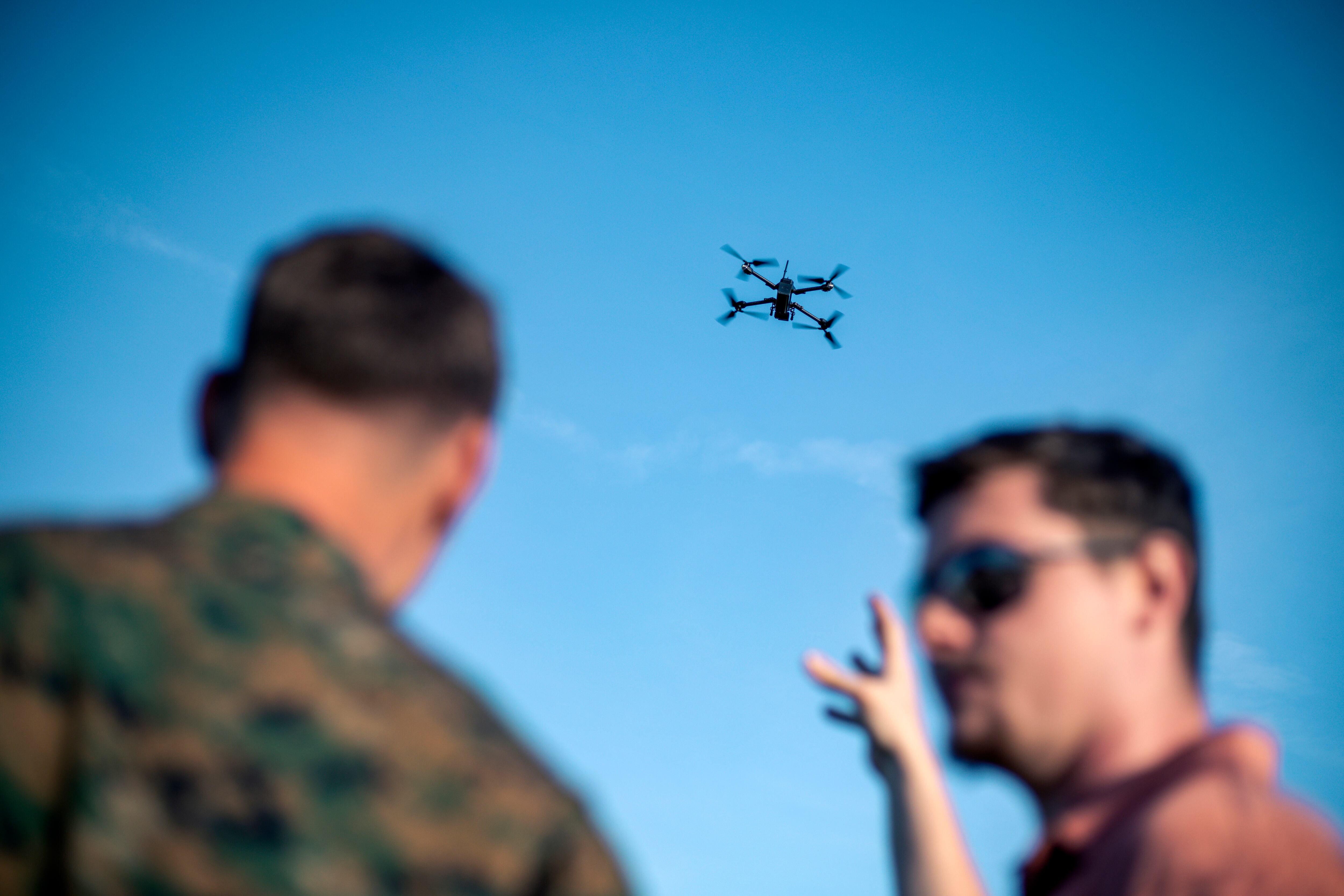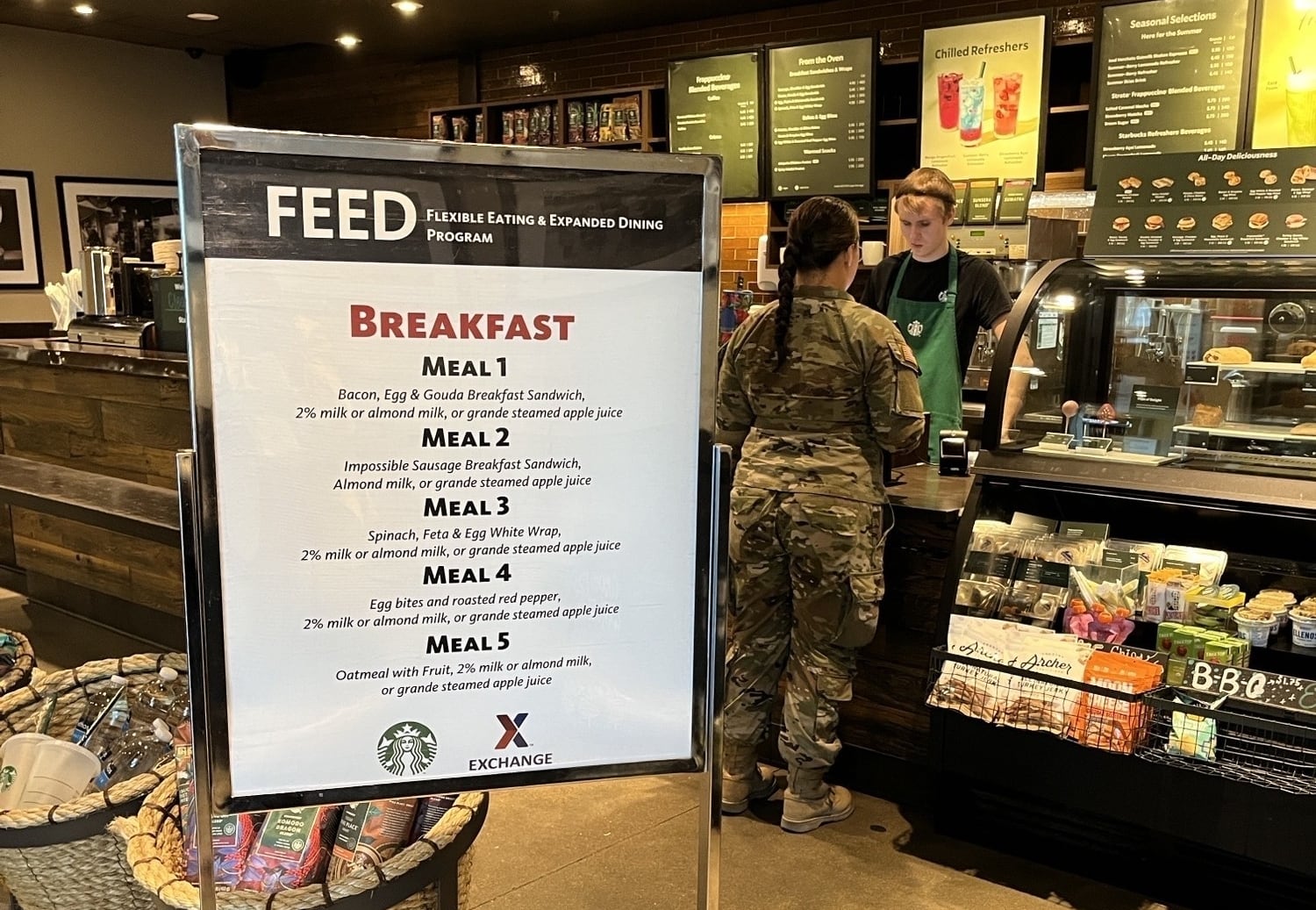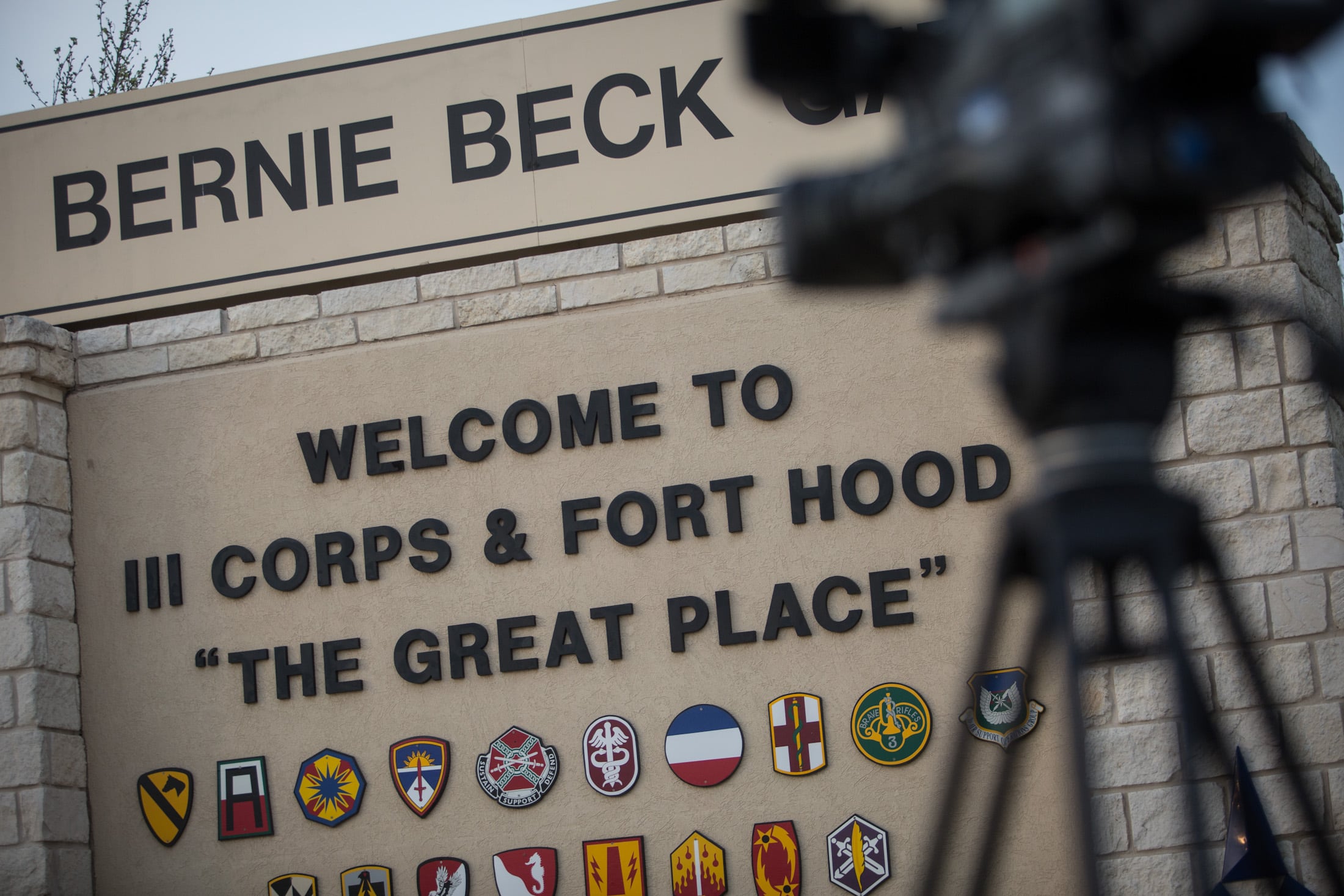The Marines’ new Attack Drone Team is tackling the challenge of turning drones into weapons. And they want to get more rank-and-file Marines in on the action.
The Corps’ Attack Drone Team — announced with videos and fanfare March 31 — represents what leaders hope is a turning point in ground-level drone warfare.
While infantry units have integrated small unmanned aerial vehicles in formations for intelligence, surveillance and reconnaissance, armed drone warfare has largely been left to much larger platforms.
The move is necessary now, leaders said in the team’s rollout, “in response to the rapid proliferation of armed first-person view drone technology and tactics,” most notably in Russia and Ukraine.
But one challenge leaders see in integrating payload-carrying drones into infantry formations is overcoming the barriers for Marines to gain experience operating the unmanned systems, which can be subject to an array of military and civil rules and restrictions.
Col. Scott Cuomo, the commanding officer of Weapons Training Battalion at Marine Corps Base Quantico, Virginia, and a planner behind the Attack Drone Team, said he was having conversations with Maj. Gen. Jason Woodworth, commanding general of Marine Corps Installations Command, about changing range control regulations to allow for simpler integration of drones into training — and notably, give Marines more options to train with drones in their downtime and near their living quarters.
“We’re working through changing the ... regulations so that if you’re in 1/1 or 1/2, whatever it is, you can fly this capability in proximity to your barracks, without any kinetic live ordnance on them, that you could just train,” Cuomo said, referring to Marine infantry battalions located in California and North Carolina.
“You’ve probably seen Marines go into the armory, draw their weapons, draw their comm gear and then just train in an open field and work on drills or whatnot,” he said. “Right now, it’s challenging to do that with small drones.”
Within the next few months, Cuomo said, he expects to get authorization or changes made that allow for permission for broader drone activity around bases at 150 to 200 feet above ground level, with prior authorization from range control that takes 15 to 20 minutes. Today, he said, authorization can take a month or more.
Likewise, Cuomo said, he wants to change the lengthy permissions process for formal range training operations with what the Marine Corps is now calling first-person view, or FPV, drones. Currently, he said, drone operators must make range requests specific to the frequency spectrum on which the FPV is operating, inputting data into a system that again may take one or two months to issue an approval.
“We have the full support of senior leaders of the Corps,” Cuomo said.
Evidence of that support is abundant. In addition to the team’s splashy public rollout, it was featured prominently this month in Marine Corps Marksmanship Championships events at Quantico. The team also planned multiple demonstrations this week at the Modern Day Marine expo in Washington.
But how the team will ultimately change the game for the Marine Corps writ large is still to be determined.
The current outfit, Cuomo said, is composed of nine Marines, including a mix of officer and enlisted personnel. Some are volunteers from Weapons Training Battalion, he said; others have intelligence backgrounds.
In an early effort, Cuomo said, leaders behind the team were able to turn one lance corporal into a “basically trained FPV pilot who could destroy a target out at 20 [kilometers]” with just 26 hours of simulator training.
That turnaround emphasizes the ease with which the Marine Corps may be able to train a large number of infantry troops to operate weaponized drones on the battlefield. But many questions remain unanswered, including how these FPVs will be integrated into units, how they’ll be employed and what payloads they’ll be carrying.
While all FPV flights have been with simulated payloads so far, Cuomo said, the team is eyeing a live-fire event with an anti-personnel payload, with other live payloads to follow.
Cuomo said watching operations in Ukraine with explosive payloads on drones raises questions about how to build the systems. But, he suggested, the team could help the Corps work with noncommissioned officers who already train with explosives and find ways to integrate FPVs into what they’re already doing.
There may be ways, he said, to “tweak a program of instruction” rather than creating a months-long training program from scratch.
“Let NCOs loose,” he said. “That is our asymmetric strength.”





